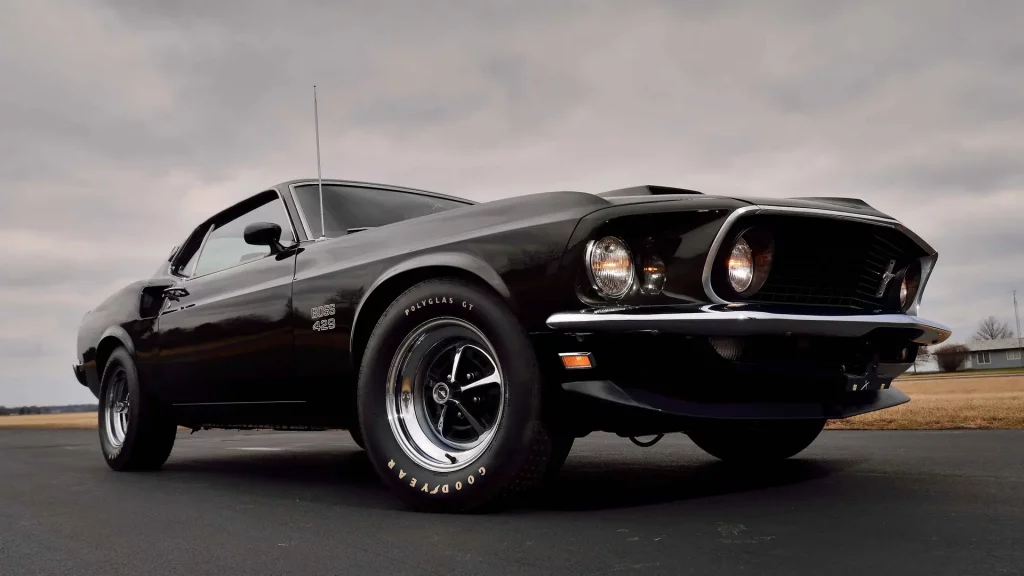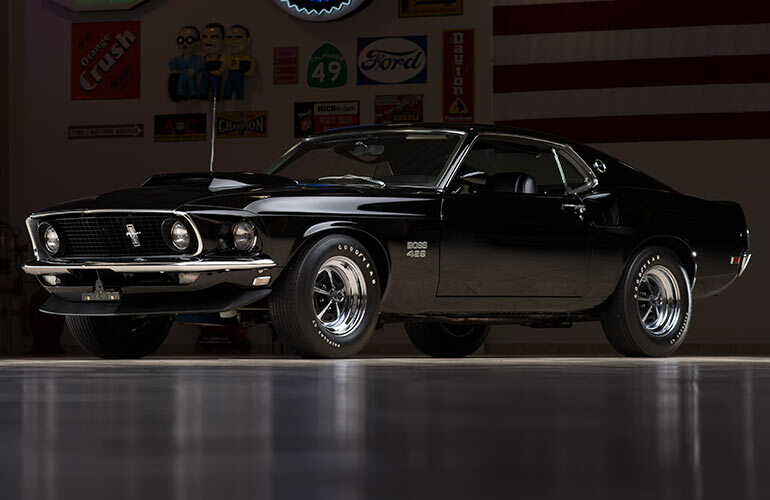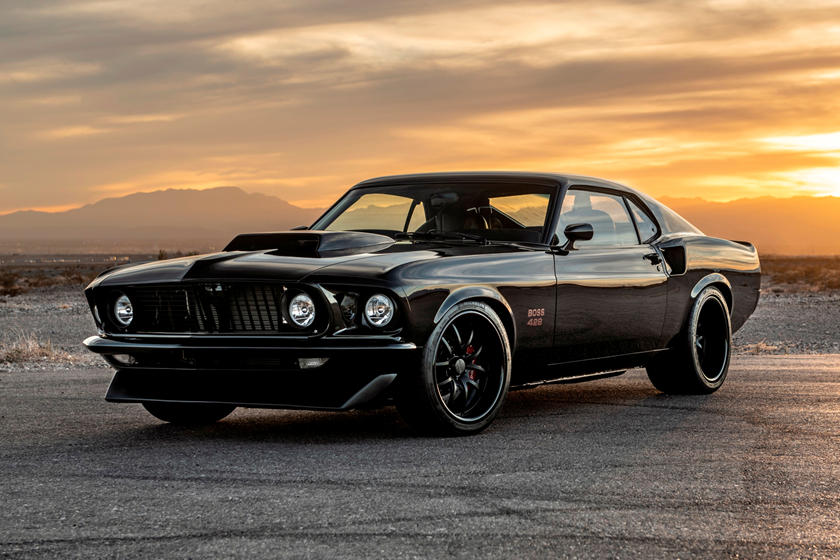From the day it was launched in the market till today, Ford Mustang has become one of the most popular and widely used muscle cars ever in the history of America.
Table of Contents
Not only that, it has become a US muscle car-industry icon, which caught the eye of several car enthusiasts worldwide.
So to make Mustang cars a bit more appealing to buyers, the Ford Motor Company has started releasing various high-performance variants; albeit for a little more money!
Though every Mustang high-performance variant is unique and carries certain features, Ford Mustang Boss 429 remains arguably the best and most memorable muscle car in the Mustang lineup.
Want to know how much is a Mustang Boss 429 is worth on the market? If so, then read on!
What Is A Mustang Boss 429?
From the line of vehicles that Mustang has released, few are as iconic as this one; hence, it deserves a proper introduction! So without further ado, here is the history of the 1969 Ford Mustang Boss 429:
A Reply To The Camaro
After Carroll Hall Shelbys’ Terlingua Racing Team Mustang won the 1967 SCCA Trans-Am Championship, Ford confronted a significant opponent in 1968: Chevrolet Camaro Z28.
The power and performance of the Camaro Z28 were phenomenal, so much so that no Ford car had the potential to beat it in the race.
As a result, Ford decided to retort this “new threat" with the latest variant primarily based on Ford Mustang Fastback.
Envisioning The Design
And then, Semon Emil Bunkie Knudsen –the former President of Ford Motor (1968-69) – assigned the design and style of this new Ford homologation to Lawrence Kiyoshi Shinoda.
Just for context, Shinoda was a hot-rodder, a drag racing specialist, and a skilled automotive designer.
Before this, Larry Shinoda had worked on various General Motors (GM) show cars and even designed the famous 1963 Chevrolet Corvette Stingray.
The 429 Is Born!
The result of this entire effort was Mustang Boss 429! This specific vehicle was developed, assembled, and engineered by Kar-Kraft, Michigan.
Ford’s experimental project developed an excellent car engine with enormous aluminum heads and a hemispherical combustion chamber mounted on the vehicle.
The Ford Mustang Boss 429 was introduced first in 1969. As the vehicle was designed to be the NASCAR homologation, they were required to produce some 500 examples.
However, the exact models manufactured in 1969 were 859. In addition, Ford continued the 1969 Mustang Boss 429 production the following year, restricting the total count to 1358.

What Are The Features Of A Mustang Boss 429?
Here are some of the most prominent features of the 1969 Ford Mustang Boss:
Authoritative Look
The 1969 Mustang Boss 429 carries an intensely aggressive appearance that few could ignore. Though everything about Mustang Boss 429 is attractive, the most noticeable feature is its fully operational hood scoop – something you won’t find in other Mustangs of that period.
In fact, the air scoop used on Boss 429 is still one of the most prominent scoops utilized on any Mustang manufactured till today.
Another factor that adds to the classic look of this Mustang model is its matte-black chin spoiler, designed to minimize aerodynamic drag that influences the vehicle at a higher speed.
It also has a rear spoiler (optional) for the deck lid. The car’s rear fenders have a flared look and feature unified air scoops mounted to the leading edge.
However, like most Mustangs of the 1960s and early 70s, Boss 429 didn’t have rocker panel decal stripes.
This Mustang model comes in various color options such as Royal Maroon, Blue, Black Jade, Wimbledon White, Candyapple Red, and Raven Black.
Basic Yet Elegant Interior
Compared to the Shelby Series Mustangs - the Holy Grail of American-based muscle cars - the Mustang Boss 429 has a rather basic yet elegant interior.
In addition, it features Ford’s standard “Interior Décor Group,” featuring deluxe seat belts and high-back bucket car seats.
This Mustang model by Ford has a comprehensive interior alongside parking brake lights, luggage compartment lights, glove box lights, ashtray lights, and ignition switch lights.
Also, it comes with an aluminum steering wheel, customized console, air conditioning system, and 200-mph 429 gauges.
The interior also includes a manual choke and ram-air vent door-knobs. If wanted, you can add a unique instrument cluster, including a tachometer apart from other standard gauges.
The 375 Hp 429 V-8 “Hemi Killer”
The Ford Mustang 429 engine is derived from the Ford 385. It utilizes 4-bolt main caps and the forged steel crankshaft and connecting rods.
It also features aluminum heads with a semi hemispherical combustion chamber that Ford called “Crescent.”
Additionally, the engine came with a standard “Single Holley Four-Barrel Carburetor” rated at approximately 735-CFM mounted on the aluminum intake.
The vehicle has four-speed manual transmissions and a powerful 375 horsepower rating, even though the actual output many claimed was well above 500Hp.
Also, the car’s engine compartment was modified to accommodate such a massive engine.

How Much Is A 429 Mustang Worth?
Believe it or not, Boss 429 1969 is amongst the most desirable and rarest Mustangs out there. So, if you want this vintage car, get ready to spend some money as it doesn't come cheap!
Though the prices vary based on model condition and supplier, you can still buy a 429 Mustang anywhere from $165,000 to $244,000 and more. And they're not too rare to find.
The average price range of the car is $204,000. However, if the body is in fair condition, has exceptional originality, and has low mileage, expect to pay easily above $200,000.
Where Can I Buy A Mustang Boss 429?
Looking to buy a Mustang Boss 429? Even though Boss 429 Mustangs were limited in numbers when manufactured in 1969-70, you can still find one for yourself quite easily.
Today, many leading automotive online marketplaces make car selling and buying easy, efficient, and transparent.
However, if you want a brand new Mustang Boss 429 with the original touch, buy from Classic Recreations as they acquired the rights to manufacture and sell new 1969 Mustang Boss 429 vehicles.
They will charge you a $209,000 base price for this Ford model. However, the cost can vary based on your choice to buy.
Boss 429 Mustang By Ford Motor Company
Buying a good muscle car isn’t just a regular hobby; it’s the dream. The Boss 429 Mustang is amongst the most precious vintage vehicles mainly because of its rarity, as only a handful of cars were manufactured in 1969 and 1970.
Today, there are even lesser Boss 429 Mustangs. Though you’ll find many continuation variants available, none provide the similar gravitas as the original vintage Ford Mustang Boss 429.
Being an original owner of a vintage 1969 Ford Mustang Boss 429 with a robust engine, special exhaust note, acceleration, and stock paint is just a delight not many people experience.
However, the operational costs can also increase as spare parts could be expensive and hard to find.
Nevertheless, these issues are quite common in any vintage muscle car. All these factors don’t matter if you’ve got a true passion for muscle cars.

